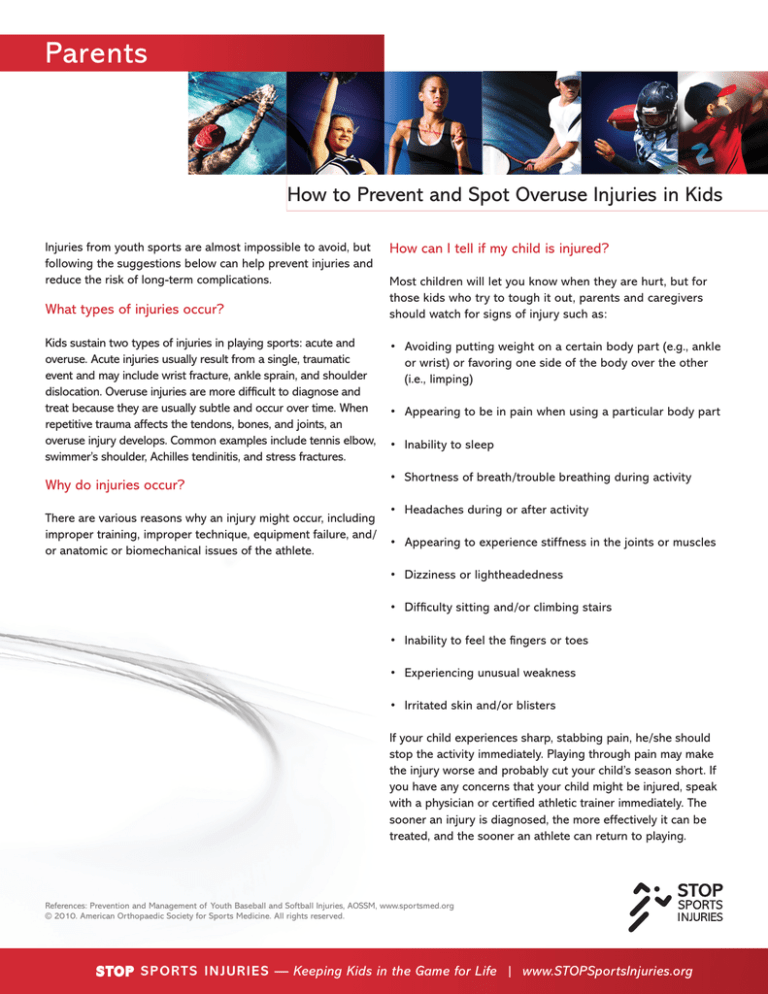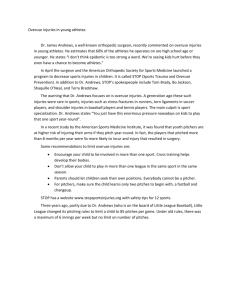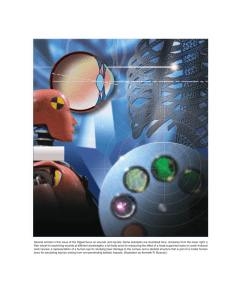
Parents
How to Prevent and Spot Overuse Injuries in Kids
Injuries from youth sports are almost impossible to avoid, but
following the suggestions below can help prevent injuries and
reduce the risk of long-term complications.
What types of injuries occur?
Kids sustain two types of injuries in playing sports: acute and
overuse. Acute injuries usually result from a single, traumatic
event and may include wrist fracture, ankle sprain, and shoulder
dislocation. Overuse injuries are more difficult to diagnose and
treat because they are usually subtle and occur over time. When
repetitive trauma affects the tendons, bones, and joints, an
overuse injury develops. Common examples include tennis elbow,
swimmer’s shoulder, Achilles tendinitis, and stress fractures.
Why do injuries occur?
There are various reasons why an injury might occur, including
improper training, improper technique, equipment failure, and/
or anatomic or biomechanical issues of the athlete.
How can I tell if my child is injured?
Most children will let you know when they are hurt, but for
those kids who try to tough it out, parents and caregivers
should watch for signs of injury such as:
• Avoiding putting weight on a certain body part (e.g., ankle
or wrist) or favoring one side of the body over the other
(i.e., limping)
• Appearing to be in pain when using a particular body part
• Inability to sleep
• Shortness of breath/trouble breathing during activity
• Headaches during or after activity
• Appearing to experience stiffness in the joints or muscles
• Dizziness or lightheadedness
• Difficulty sitting and/or climbing stairs
• Inability to feel the fingers or toes
• Experiencing unusual weakness
• Irritated skin and/or blisters
If your child experiences sharp, stabbing pain, he/she should
stop the activity immediately. Playing through pain may make
the injury worse and probably cut your child’s season short. If
you have any concerns that your child might be injured, speak
with a physician or certified athletic trainer immediately. The
sooner an injury is diagnosed, the more effectively it can be
treated, and the sooner an athlete can return to playing.
References: Prevention and Management of Youth Baseball and Softball Injuries, AOSSM, www.sportsmed.org
© 2010. American Orthopaedic Society for Sports Medicine. All rights reserved.
S TOP S PORTS INJ URIES — Keeping Kids in the Game for Life | www.STOPSportsInjuries.org
Parents
How to Prevent and Spot Overuse Injuries in Kids
What are some ways to prevent injuries?
• Have your child receive a pre-participation physical.
Having an annual pre-participation physical exam allows for
the screening, prevention, and treatment of any conditions.
• Encourage your child to warm up properly before an
activity. Warming up before an activity involves gradually
bringing the heart rate up from the resting level by
engaging in low-impact exercise such as jogging in place.
Athletes should also stretch their muscles to release
tension and help prevent injury. Stretching involves going
just beyond the point of resistance and should not include
bouncing. Stretches should be held for 10-12 seconds.
• Be sure your child cools down properly after an
activity. Cooling down after an activity allows an athlete’s
heart rate to gradually return to a resting level. Once
again, stretching may be helpful to avoid injury.
• Have your child wear proper fitting equipment. Make sure
your child’s equipment such as running shoes are in good
condition and fit properly. Something as simple as weekly
equipment checks may help minimize the potential for injury.
• Be sure your child drinks enough water. Athletes often
forget to hydrate—an essential step for the body to run
well. Hydration allows muscles to work properly and avoid
cramps and spasms. See that your child takes water breaks
every 30 minutes or more often based on the level of
activity and temperature.
• Encourage your child to rest and take a break. Athletes
who play sports year-round are more likely than others to
experience overuse injuries because they aren’t giving their
bodies a chance to rest and recover. Encourage your child
to take at least one season off a year. Also, suggest ways for
your child to mix it up—encourage your child to play different
sports during the year to avoid using the same muscle
groups continuously, which can also lead to overuse injuries.
• Obtain instruction on proper training and technique.
Coaches and trainers are there to help teach proper
technique and avoid injuries. It is very important for your
child to listen to their instructions because most overuse
injuries occur because of improper training or technique.
Before beginning any training program or activity work,
with a physician and/or coach to make sure the program
won’t cause chronic or recurrent problems. They will take
into consideration your child’s current fitness level and
how the training program might complement or hurt it.
• Increase training gradually. When deciding when and
how much to push your child to the next level, remember
the 10 percent rule: do not increase training activity,
weight, mileage, or pace by more than 10 percent per
week. This allows the body ample time to recover.
References: Prevention and Management of Youth Baseball and Softball Injuries, AOSSM, www.sportsmed.org
© 2010. American Orthopaedic Society for Sports Medicine. All rights reserved.
S TOP S PORTS INJ URIES — Keeping Kids in the Game for Life | www.STOPSportsInjuries.org




